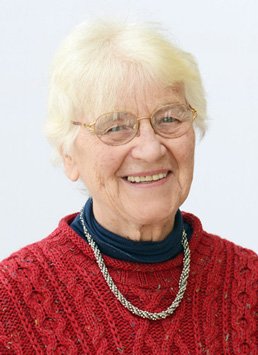Society for the Study of Women Philosophers, Inc.
a non-profit, tax-exempt educational charity 501(c)3 Internal Revenue Code
Zitkala-Sa (Gertrude Simmons)
1876-1938
Native American Philosophy,
Social & Political Philosophy
|
Kate Lindemann's Women Philosophers pages |
 |
Remember!! Your purchase of books by clicking on Abe Books or Amazon links through this site earns us a small commission that is used to provide travel scholarships. |
Zitkala-Sa born Gertrude Simmons, was one of the first Native American women to write and publish traditional tribal stories and autobiographical pieces. Her upbringing on the Sioux reservation in South Dakota, her education in white missionary schools and her subsequent employment in white schools is the basis for many of her pieces criticizing white oppression of Native Americans. Throughout her life she struggled with her status as a white-educated Indian and her passion for Native American culture and Indian rights.
Chronology
- 1876: Gertrude Simons (Zitkal-Sa ) was born on February 22nd, 1876 at the Yankton Sioux Agency. Her mother was Tate I Yohin Win, a full-blood Dakota and her father was John Haysting, a white man who left before she was born. She lived with her mother and learned the ways of her tribe until she was recruited for boarding school at the age of 8.
- 1884: White missionaries arrive at the Sioux reservation recruiting students for White's Manual Institute, a Quaker boarding school in Wabash, Indiana. Despite Tate I Yohin Win's fear of white society, she though her daughter would need a traditional white education as settlers encroached on Indian land.
- 1895: Completed 6 years of missionary education at White's Manual Institute.
- 1895-1897: Attended Earlham College where she developed talents as a violinist and orator.
- 1899-1900: Accepts a teaching post at the assimilationist school, Carlisle Indian Industrial School in Pennsylvania. Here she began publishing under the nom de plume Zitkala-Sa (Red Bird). Although, the name is Sioux in origin (Lakota), it is not from her native dialect (Nakota). Some think that her selection of a Native American pen name not originating from her ancestral tongue signifies her feelings of disassociation from both white society and her tribe. She is said to have described her status as, "in the heart of chaos, beyond the touch or voice of human aid." During this time she also published short stories in Harper's Magazine and Atlantic Monthly.
- 1901: Leaves Carlisle School amidst criticism from the founder, Richard Henry Pratt, who characterizes her stories as "worse than pagan" and "trash." However, she is contracted with Ginn and Company to contribute material for Old Indian Legends (1901). She begins work as an issue clerk on the Standing Rock Reservation in North Dakota. Also, during this time her romantic relationship with Carlos Montezuma, a Yavapai doctor and intellectual, dissolves over a dispute between assimilating into Chicago's white society as a doctor's wife or remaining faithful to her ideals of Native American culture and heritage.
- 1902: Moves to Unitah and Ouray Reservation in Utah where she is a teacher and clerk. She meets and marries Raymond Talesfase Bonnin, a Yankton Sioux.
- 1903: Gives birth to a son, Raymond O. Bonnin
- 1911: Becomes a member of the Society of American Indians.
- 1913: Despite dismal conditions of the reservation and the challenges of motherhood she collaborates with William Hanson in the creation of the Indian opera, "The Sun Dance".
- 1916: She leaves the Unitah and Ouray Reservation and moves to Washington D.C. where she works as the secretary of the Society of American Indians.
- 1918-1919: Zitkal-Sa becomes the editor of the American Indian Magazine
- 1920: The Society of American Indians is disbanded. Zitkala-Sa begins working with the General Federation of Women's Clubs to eventually found the Indian Welfare Committee.
- 1926-1938: Becomes an organizer and later president of the National Council of American Indians. She works for fair Indian legislation- traveling the United States speaking at women's clubs and publishing essays and articles in support of Indian rights.
- 1938: Dies of heart and kidney disease January 26th and is buried in the Arlington National Cemetery.
Bibliography
- 1901. Old Indian Legends, Retold by Zitkala-Sa < >(Boston & London: Ginn, 1901). See: Zitkal-Sa Old Indian Legends
- 1913. Play: The Sun Dance by Zitella-Sa and William Hanson, Vernal, Utah, Orpheus Hall, 20 February 1913.
- 1921. American Indian Stories by Zitkala-Sa
- 1924. Oklahoma's Poor Rich Indians: An Orgy of Graft and Exploitation of the Five Civilizes Tribes - Legalized Robbery by Zitkala-Sa as Gertrude Simmons Bonnin, Charles H. Fabens, and Matthew K. Sniffen (Philadelphia: Office of the Indian Rights Association, 1924)
- Why I am a Pagan
NOTE: Click on links to purchase a book on Amazon:
SECONDARY SOURCES:
- Frederick J. Dockstader, "Gertrude Simmons Bonnin," in Great North American Indians: Profiles in Life and Leadership (A norback book)
- Mary E. Young, "Gertrude Simmons Bonnin," in Notable American Women, 1607-1950, edited by Edward T. James (Cambridge, Mass.: Belknap Press, 1971) , pp. 198-200.
- Deborah Welch, "American Indian Leader: The Story of Gertrude Bonnin," dissertation, University of Wyoming, 1985.
The material for this entry was researched and submitted by Alissa Pruess.
Zitkala-Sa is featured in Busted!! A History of Women Philosophers DVD, Volume 4.
This page was last updated 12/18/14.
Society for the Study of Women Philosophers